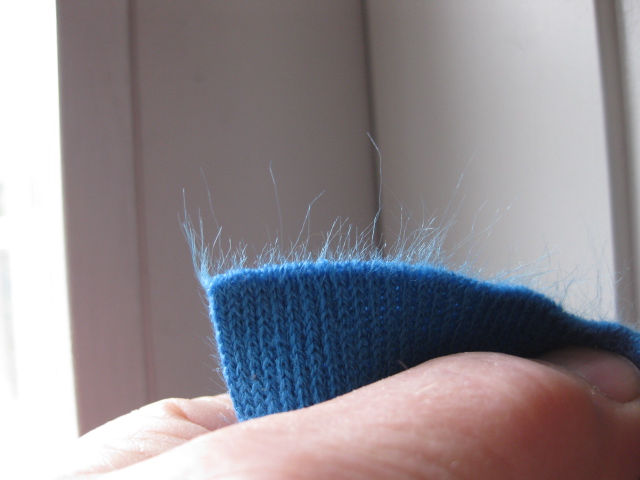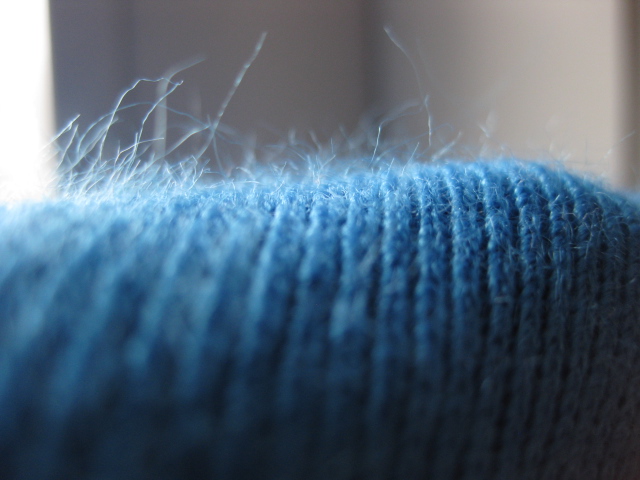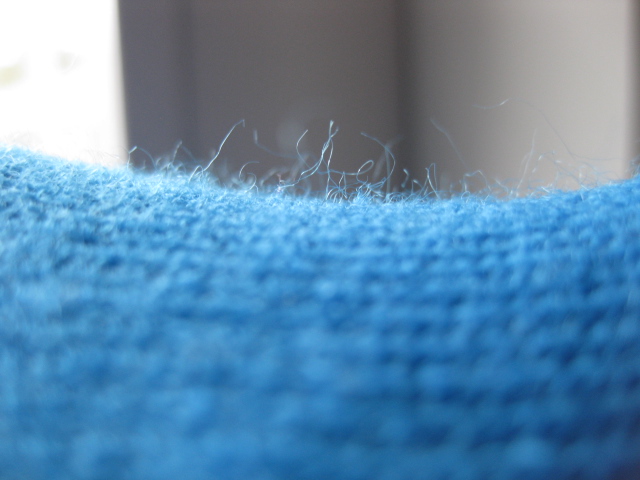Topic
A good alternative to WPB gear for ACTIVE backpacking
Forum Posting
A Membership is required to post in the forums. Login or become a member to post in the member forums!
Home › Forums › Gear Forums › Gear (General) › A good alternative to WPB gear for ACTIVE backpacking
- This topic has 367 replies, 46 voices, and was last updated 6 years ago by
 Stumphges.
Stumphges.
-
AuthorPosts
-
Mar 26, 2017 at 11:32 am #3459588
thread drift alert :) ^ but it was a backpacking trip several years ago with my wife that convinced me to go w/ the eVENT mitts- it was a slow drizzly cold rain (not quite snow) we were trudging through and everything was good to go, BUT our hands- the fleece gloves eventually became wet and with just a little wind it would literally numb your hands. since then, donning eVENT mitts in cold/wet conditions over fleece gloves has eliminated that problem
Mar 26, 2017 at 3:02 pm #3459639BUT our hands- the fleece gloves eventually became wet and with just a little wind it would literally numb your hands.
Just using Mike’s comments as an example only.What I do not understand is why you guys leave your hands out in the wind and rain, to get cold and wet. I keep my hands inside my poncho under those conditions, out of the rain, and they are fine. Why can’t you adapt to the conditions like that?
Cheers
Mar 26, 2017 at 3:03 pm #3459640Take several pair of the 5 mil Harbor Freight disposable nitrile gloves. You can also size up and get the 7 mil version and go over gloves for wet conditions and/or use the 5-mil under gloves.
Using a liner, the nitrile gloves and a fleece power stretch that combo is pretty flexible.
For me… the worst conditions are cold/rain. I don’t have any problems keeping my hands warm in the snow although I don’t trek around in sub-zero weather either. Cheapo nitrile gloves smartly layered have been the magic bullet.
Mar 26, 2017 at 4:12 pm #3459660Yesterday in 40F, gusty 5 – 10 mph breeze and steady rain. I was walking my regular 6 mi training route, up & down between 3,000 and 4,000 ft with a 26 lb load. I began wearing only an old capilene 1 layer under the Patagonia AirShed shirt and OR windstopper gloves. At this temp and this amount of rain I felt like I was right at the limit of the cap 1 and windshirt for staying comfortably warm. I kept my pace up and I wasn’t really chilled until about an hour into the walk when I ran into another hiker and stopped to talk. Probably talked for 20 min as the rain gradually turned into wet snow. At that point I really should have taken time to add another (R1 hoody?) layer, but I didn’t. So I got cold. Once I started walking again, fairly steep climb, I was comfortable again except my gloves were wet now and my hands were cold. No overmitts. At the top of the ridge I paused to put an R1 hoody under the windshirt and a Frogg Toggs jacket over all. I immediately warmed up except for my hands. Again, no overmitts (or nitrile gloves, great idea.) I stayed comfortable (except for my hands) across the exposed ridge and all the way back down, removing the jacket at about 3200 ft. At the end of the hike, at the end of the driveway, in the mailbox, was my ZPacks rainmitts and a new pair of Possum Down gloves. Next time my hands will be warm too. And I’m pretty impressed with the AirShed – it never did wet out in either steady blowing rain or light wet snow. Trying to tie it all together. :)
Edit: I meant to add, I really appreciate this thread and the information you all are sharing. After a decade or more away from the sport, I feel like I’m getting a handle on some of the new materials and available gear. Thanks!
Mar 26, 2017 at 4:14 pm #3459662Roger- hindsight being 20:20, we probably could have folded up the trekking poles and strapped them to the pack and tucked our hands in our rain jackets; instead we trudged on with trekking poles out
eVENT mitts have made it a moot point now :)
Mike
Mar 26, 2017 at 5:38 pm #3459681Hi Mike
Hindsight … wonderful stuff. No matter: next time you walk into those conditions you could try folding up the poles. Thing is: keep learning!
Cheers
Mar 26, 2017 at 8:27 pm #3459704I have two things going for me when I must backpack in all day rains.
- The mesh trampoline back on my Osprey EXOS 58 three season pack. It permits my eVent parka to breath – a bit.
- The wet but warm feel of my Cabela’s light, long sleeve, polyester zip T-neck base layer. It’s warm(er) when wet than any other base layer I have. Maybe Patagucci’s Capilene poly base layer is good too. Never tried it. Merino wool is not for me in the wet. Been there and don’t like it. YMMD.
A OR GTX Seattle Sombrero may be another Item but so far a nylon baseball cap W/plastic brim under my eVent parka hood does OK to keep rain (mostly) off my glasses.
Well-maintained GTX boots are fine – for the first 1/2 of the day. Then they get very damp but not “sloshy”.
And once again, I like thin neoprene duck hunting gloves much more than GTX “rain mittens”.
Mar 28, 2017 at 1:47 pm #3460052So whut happens if the HH is under 300?
;)
Mar 28, 2017 at 2:50 pm #3460074On Sunday, I hiked in PNW all day dampness. I can’t say it was rain all day, but it was rain at the beginning, hiking under trees with dripping, then once over the ridge and facing the ocean, wind about 6-14 mph, with drizzle. Temps ran about 44-49 F. I wore a Cabelas lightweight ECWCS top, with a new Patagonia Houdini on top. On my legs, I hiked in Terramar silkweight base layer under a Purple Rain skirt. I started out with Montbell Tachyon pants on over the tights, but that fast got too warm. I was comfortable all hike, and was pleasantly surprised at how dry my shirt was afterwards. The only place that stayed damp was the armpits. Normally after a hike, I’m cold and have to put on layers. The only layer I put on was a Melanzana grid fleece vest modified from one of their grid fleece crews. I was impressed how fast moisture appeared on the face of it, wicked from the base layer, and was comfortable without adding anything else except a fleece hat.
I think this was probably the most comfortable I’ve been in cool wet conditions. I’m not sure how well it would have worked with sustained rain, but the jacket did its thing and never wet out.
Mar 28, 2017 at 5:56 pm #3460129Eric,
You said, “So whut happens if the HH is under 300?”. I researched the Natick specifications and they say “>300mm”. That was/is also about the current state of the art for HH of woven garments with airflow up to 25 CFM. My GUESS is that your satisfaction in high MET / heavy rain activities will be progressively reduced as is the HH is (smile).
Mar 28, 2017 at 6:01 pm #3460130Great to read your trip report, Diane.
Paramo uses a DWR (Nikwax)-treated “pump liner” as the second layer of their two-layer system. The DWR reverses the capillary action of the fabric by making the fibers hydrophobic, so this liner has its less dense (furry) side out and the tightly knit side facing the skin. According to this, the pump liner has these performance characteristics:
<div class=”page” title=”Page 2″>
<div class=”section”>
<div class=”layoutArea”>
<div class=”column”>Minimum static water transfer face to face – 300 gms per hour
Maximum water content after 30 minutes of static draining – 20%
Does anyone know if Polartec releases similar specs for their Power Dry and Power Stretch fabrics, which wick in the opposite direction (from less to more dense) due to their fibers having been made hydrophilic?
</div>
</div>
</div>
</div>Mar 28, 2017 at 6:02 pm #3460132Bill M and Diane- thanks so much for documenting your experiences! :)
Mar 28, 2017 at 6:07 pm #3460134Stumpghes – very good question, I wonder if anyone has a good answer
Mar 28, 2017 at 6:42 pm #3460142The Melanzana grid fleece has the solid surface on the inside of the garment, and the grid on the outside. So, for the combo I was wearing after the hike, it was grid-knit-knit-grid-Houdini for the fabric surfaces: 3 layers, 2 gridded, with the grids facing opposite directions.
Don’t know what the science says, but it seemed to work well. The moisture transport between layers was great.
Mar 28, 2017 at 6:52 pm #3460147Stumpghes,
At minimum, we need to know the test area and ideally also the standard before their “water transfer” number could be compared to another fabricI can double my surface area and double my water transport number. I can devise an environment to provide whatever figure a marketing department wants to publish. The evaporation rate on top of the capillary will vary based on whatever temperature and air velocity combination I choose. I works like a tree. The capillary transport increases with higher temperature and/or more wind; both of which increase the evaporation rate.
Mar 29, 2017 at 2:45 am #3460215empty
Mar 29, 2017 at 9:18 am #3460252Richard, ah, of course. I’ll check with Paramo.
Mar 29, 2017 at 11:00 am #3460273looking at the Paramo system, wonder if there would be any perceivable difference in turning inside out fleece layers (including Cap4/Thermal) where the “fuzzier” side is out? would/could that increase capillary action moving moisture away from the body?
Mar 29, 2017 at 11:39 am #3460284Mike,
My understanding, which is limited, is that turning a hydrophilic wicking fleeced layer (Power Dry, Power Stretch, et al.) inside-out would simply reverse the wicking action – toward the skin. Paramo uses this effect with their base layers (which are hydrophilic wicking layers substantially similar to the Polartec products): they advocate wearing the fuzzy size in when it’s cold to wick moisture away from the skin, and wearing it the other way around when it’s hot to trap evaporating moisture against the skin.
To fully convert a hydrophilic wicking layer – like Power Dry – to a hydrophobic “pump liner,” I think you’d have to treat it with a DWR and then turn it inside-out. I’ve been wanting to try this for some time but have hesitated cuz I’m not sure it will work. Power Dry is made of polyester, which is naturally hydrophobic, which is great because its fibers do not absorb water (like cotton or wool do). But to get hydrophobic polyester to wick, my understanding (again, limited) is that Polartec chemically treats or physically etches the fibers or yarns so that their surfaces become hydrophilic. Their insides are hydrophobic, so they won’t hold water, but their outsides are hydrophilic, so that when you arrange or knit them into a fabric that is denser on one face than the other, they will wick water across that fabric (from less to more dense). I’m leery about treating these fibers with a DWR because I’m not sure how the chemical DWR will interact with polyester fibers that have been engineered to behave hydrophilically.
I guess the thing to do is just try it.
The interest in messing with a good thing here is that, according to the Leeds Rain Room document, a Paramo system will keep the wearer dry when static, for at least 4 hours of heavy rain. The PCU-style (analogous to the Buffalo system), meanwhile, only seems effective with the addition of substantial body heat generated by activity.
Mar 29, 2017 at 11:48 am #3460286In most cases wearing the fuzzy grid side next to the body creates more warmth due to more air held next to the skin, which will translate into faster drying times. On the other hand, having more surface area/fuzziness on the outside means greater evaporation, because there is more surface area of water exposed to the outside air. From biology, my field, we know that greater surface area equals greater diffusion, aka wicking and evaporation. So the best tactic perhaps is to have high surface area on both sides – aka thermal pro, alpha direct, etc. The melanzana microgrid hoody has a lower pile but still brushed grid interior, and a higher pile brushed outer, so I imagine that would work well, but I imagine only in pretty cold and/or sustained rain. It also has relatively more material than alpha direct, meaning longer drying times.
I think alpha direct 90 might make a really perfect garment for this application, It weighs a bit less than cap 4 but is lofty on both sides, making diffusion of vapor easier while also holding a lot of warm air per amount of fabric, probably meaning faster drying times.
Mar 29, 2017 at 12:39 pm #3460302looks like there are several (often competing) factors going on at the same time- interesting stuff- thanks!
Mar 29, 2017 at 12:55 pm #3460306Wouldn’t Alpha 90 be too warm for backpacking above freezing? The biggest knock on Paramo (aside from frumpy aesthetics, baggy fits and heavy weights) has been that the pump liner – a bit less insulative than 100-weight fleece – makes it too warm for backpacking above 40F or so.
I think the assumption here is that Cap 4 might be around the sweet spot for powerful wicking, moderate and adjustable (hood removal, zipping open, forearm baring) warmth, while providing enough cushion under the wind layer to reduce its water permeability. (See this discussion about the role of cushioning underlayer.)
The Buffalo system uses pile with the fuzzy or pointy sides facing the skin, but I think this is even thicker and warmer than the Paramo pump liner.
Mar 29, 2017 at 1:00 pm #3460308One of my warmest-when-wet base layers is a well used orlon sweater that is fuzzy due to age.


 Mar 29, 2017 at 1:32 pm #3460315
Mar 29, 2017 at 1:32 pm #3460315Mike,
You said, “looking at the Paramo system, wonder if there would be any perceivable difference in turning inside out fleece layers (including Cap4/Thermal) where the “fuzzier” side is out? would/could that increase capillary action moving moisture away from the body?”
Yes, to question 1 and no to question 2.
For the same system weight, either technology (capillary-Power Dry or capillary depression-Paramo) will work comparably for moving liquid water. The primary difference is that a Polartec Power Dry High Efficiency inner and EPIC outer never requires DWR to be applied to either. In contrast, the Paramo system requires periodic user DWR application to both the liner and the shell for it to work (hence Nikwax/s purchase of Paramo). It is a “sell the razor to make money from the lifetime use of the required blades” strategy. You can either push (Paramo) or pull (Power Dry) the water away from the skin.
Capillary Action

Power Dry High Efficiency – In the first situation, the water is drawn all the way to the top. Using a bi-component fabric, it is then spreads out on the surface and is evaporated.
Paramo – In the second situation, the water is pushed to the top and out. It then needs to be evaporated.
Look at the surface of the blue water; it is being pulled up along the capillary top sides in case 1 and being pushed away from the capillary top sides in case 2.
Mar 29, 2017 at 1:43 pm #3460318Good point Stumphges, I agree that above 40-45, it would be too warm for most except maybe in serious sustained wind and rain, though a higher CFM wind layer is what I would like to pair it with, which hopefully would boost that upper range.
The lower weight (not by much), increased breathability without a shell, and potentially increased speed of drying is what I find most attractive, though I have yet to try it out. On the other hand being able to turn cap 4 inside out is a big bonus for effective temp range. I imagine alpha direct might work better toward the nastier end of 32-40 and wet/windy.
-
AuthorPosts
- You must be logged in to reply to this topic.
Forum Posting
A Membership is required to post in the forums. Login or become a member to post in the member forums!
HAPPENING RIGHT NOW (February 11-21, 2025) - Shop Hyperlite Mountain Gear's Biggest Sale of the Year:
Our Community Posts are Moderated
Backpacking Light community posts are moderated and here to foster helpful and positive discussions about lightweight backpacking. Please be mindful of our values and boundaries and review our Community Guidelines prior to posting.
Get the Newsletter
Gear Research & Discovery Tools
- Browse our curated Gear Shop
- See the latest Gear Deals and Sales
- Our Recommendations
- Search for Gear on Sale with the Gear Finder
- Used Gear Swap
- Member Gear Reviews and BPL Gear Review Articles
- Browse by Gear Type or Brand.







